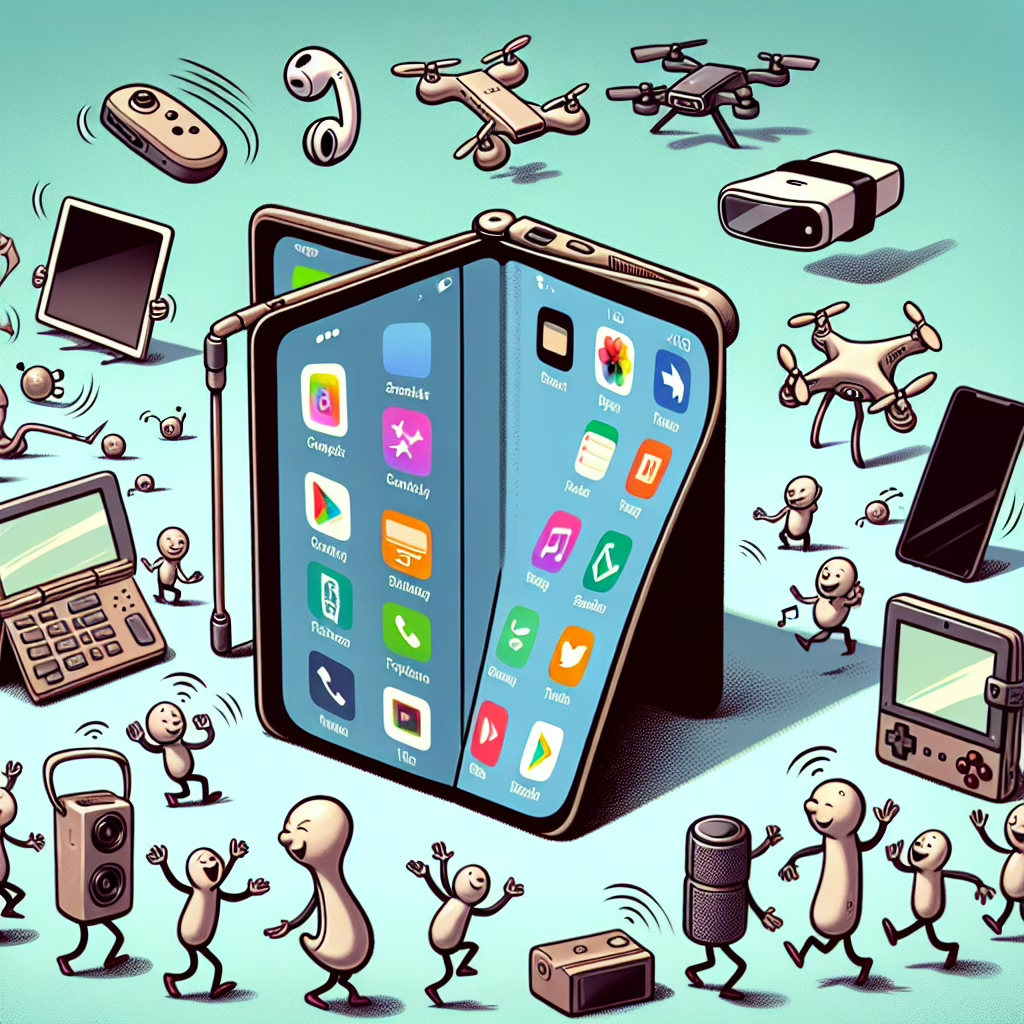Ah, the much-anticipated folding iPhone! The tech community has been buzzing with excitement, and who can blame them? A device that folds in half like a piece of origami is just too enticing. But here’s a twist: it appears that Apple may be taking a page out of Samsung’s book by potentially utilizing their crease-proof screens technology instead of crafting a custom Apple design. It’s like borrowing your neighbor’s lawnmower—sure, you’d prefer a shiny new one, but sometimes practicality wins.
Samsung’s Screen: The Unsung Hero
Let’s take a moment to appreciate Samsung’s brilliant engineering. Their screens have been through the wringer and emerged victorious! With impressive durability and flexibility, they could easily become the backbone of Apple’s folding dreams. Imagine the marketing slogans: “Foldable, but not foldable like that one time at the beach!”
Samsung has already established itself as a leader in foldable display technology. Their crease-proof screens have garnered rave reviews for their resilience. If Apple decides to embrace this technology, it would mean less time spent worrying about those pesky creases that seem to appear at the worst possible moment (like when you’re trying to impress your friends). Plus, this partnership might just give Apple the edge they need to wow consumers once again.
The Benefits of Using Existing Technology
Now, you might be wondering why Apple wouldn’t want to create its own unique screen design. Well, let’s face it; sometimes it pays to rely on proven technology. Imagine trying to reinvent the wheel when all you need is a solid set of tires! By leveraging Samsung’s expertise in crease-proof screens, Apple can focus on enhancing other aspects of the device—like making sure Siri doesn’t accidentally turn on your front camera during an important video call!
This approach could lead to significant cost savings. Developing entirely new technology can be as expensive as throwing a wedding on a budget of zero. By using existing solutions, Apple might keep production costs in check while delivering an innovative product that meets consumer expectations. Moreover, tapping into Samsung’s established supply chain can expedite the rollout of the folding iPhone.
Innovation Meets Humor
If we think about it, using Samsung’s displays could spark some friendly rivalry between these tech giants. Picture it: Apple touting their new folding iPhone while subtly hinting at their competitor’s technology. It’s like watching two chefs compete on a cooking show—one claims they invented the soufflé while the other simply perfects it!
The potential collaboration doesn’t stop there. Maybe we’ll see new features that combine both companies’ strengths. Imagine a foldable iPhone that can magically transform into an iPad when you need more screen real estate for streaming cat videos (because what else would you do with a larger screen?). Or, what if the iPhone can utilize Samsung’s technology to improve multitasking capabilities? The horizons seem endless!
The Future of Folding Devices
The folding smartphone market is still in its infancy, akin to watching toddlers learn to walk—exciting yet slightly unpredictable. As more manufacturers explore this exciting frontier, we can expect innovation to flourish. Currently, features like split-screen multitasking are gaining traction, as seen in Android’s first Canary release. Who knows? One day we might have devices that unfold into full-fledged laptops or even tablets!
In 2025, as we look back at this moment, we may chuckle at how far we’ve come. Just imagine scrolling through social media on your perfectly folded device while lounging on your couch—no crease-proof screens in sight! That is the dream, my friends.
Wrapping It Up with an Apple Twist
In conclusion, if Apple decides to take advantage of Samsung’s crease-proof screens, it could lead to an exciting new chapter in smartphone history. So let’s keep our fingers crossed (and our devices unfolded) for a future filled with innovation and laughter. The tech landscape is continuously evolving, and this collaboration could very well set new trends.
What do you think about this potential collaboration? Will it be a match made in tech heaven or just another quirky pairing? Share your thoughts below!
A special thanks to AppleInsider for the original insights that inspired this article!

